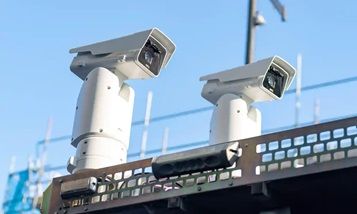Britain is an “omni-surveillance” society with police forces in the “extraordinary” position of holding more than 3m custody photographs of innocent people more than a decade after being told to destroy them, the independent surveillance watchdog has said.
Fraser Sampson, who will end his term as the Home Office’s biometrics and surveillance commissioner this month, said there “isn’t much not being watched by somebody” in the UK and that the regulatory framework was “inconsistent, incomplete and in some areas incoherent”.
He spoke of his concerns that the law was not keeping up with technological advances in artificial intelligence (AI) that allow millions of images to be sorted through within moments and that there were insufficient checks and balances on the police.
In 2012, the high court ordered police forces to destroy custody photographs of people who were never charged with a crime, including environmental activists, but Sampson said they had yet to be deleted, raising concerns that the images could be used for crowd surveillance by AI-assisted systems.
He said: “It’s extraordinary. So, the police at the moment in England, Wales have so many photographs – custody photographs of people that were not proceeded with and therefore in legal terms are innocent – that they don’t know how many they have. But it will be well over 3m.
“They were challenged in 2012 and a high court judge said you must get rid of these in months, not years. Eleven years later they still have them. And the answer to that has been: ‘Well they’re retained on a database that doesn’t have the bulk delete capability’.
“And I’ve said: ‘Well that can’t possibly be a defence because you built it.’ So what the police are trying to do at the moment is migrate that, create a new database and move everything off it that is legitimate, and by a process of elimination all that’s left can be deleted. But in terms of public trust and confidence it’s not a great place to be if that’s the only plan you have.
“So when we’re having conversations about new technologies such as facial recognition, the conversation often comes back to: ‘Why would we trust you to get this bit right? When you’ve still got legacy problems from 10 years ago from other images?’ People want to know with facial recognition: how do they find their way on to a watch list, and how could they get off it? And that’s really important.”
Sampson said the sheer weight of images captured by official cameras and those of the general public and shared online offered police forces a powerful tool in light of the advances in AI.








